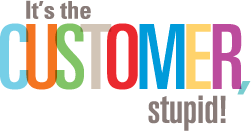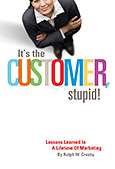The Marketing Power of Behavioral Economics
The power of behavioral economics in marketing was affirmed recently in an Advertising Age article by Michele Fabrizi, in which she analyzed the success or failure of last year’s Super Bowl TV spots. Fabrizi wrote:
“Some reviews (of Super Bowl spots) are measuring brain waves, others are looking at consumer votes and some are just personal opinion. Well, we think we know what was behind some of the very good as well as some of the not-so-good efforts. It’s all about leveraging the unconscious factors that drive 95% of consumer decision-making, and the best way to do that is through behavioral economics.”
That last sentence is gospel at my agency, Crosby Marketing. We have learned that it is critically important to invest in market research to learn what truly motivates your target audience. For example, we test messaging by constructing a series of statements and supportive points, each grounded in a different psychological motivator.
Crosby’s executive creative director, Joel Machak, has created a “cheat sheet” to explain how our Community-based Social Marketing programs use behavioral psychology to motivate behavior change. For instance, Joel lists four key motivational appeals:
1. Loss-framing:
Loss-framing works better than gain-framing. Individuals are loss-averse. It is more motivating to present a potential loss of something valuable than to present a potential gain. The threat of losing something the individual already possesses, values, and wants to keep is a more powerful motivator than presenting a potential gain coming in the future.
2. Deviance avoidance:
Show the deviant behavior as socially unacceptable. The human mind is hard-wired to remember and avoid behaviors that lead to social rejection. Showing a person doing the undesired or bad behavior, who is subsequently shunned or rejected by his/her peers, can be very motivating.
3. Intrinsic motivation:
An intrinsic or personal identity/esteem-based appeal is more motivating than an extrinsic or external/material-based appeal. Presenting a positive and broadly accepted behavior or belief that can become part of the participant’s identity is powerfully attractive. People are drawn to “do the right thing” in order to take on the positive identity associated with the new behavior, in turn increasing their sense of esteem and their personally perceived value to the community.
4. Normative belief:
We are hard-wired to identify widely practiced behaviors and widely held beliefs as successful survival strategies. Individuals are strongly drawn to emulate the actions favored by the group. Present the desired behavior as the norm; as something that many other people value and do.
This one example of how to use the principles of behavioral economics should give you an idea of its value in marketing… and help drive that 95% of consumer decision making.

 Businesses often are started by entrepreneurs with an idea, a product or service, or an expertise. Many of them fail, not because the idea or product isn’t good, but because their attention is overwhelmingly directed internally – e.g., what goes into the product – when they should focus externally, always reminding themselves:
Businesses often are started by entrepreneurs with an idea, a product or service, or an expertise. Many of them fail, not because the idea or product isn’t good, but because their attention is overwhelmingly directed internally – e.g., what goes into the product – when they should focus externally, always reminding themselves:
